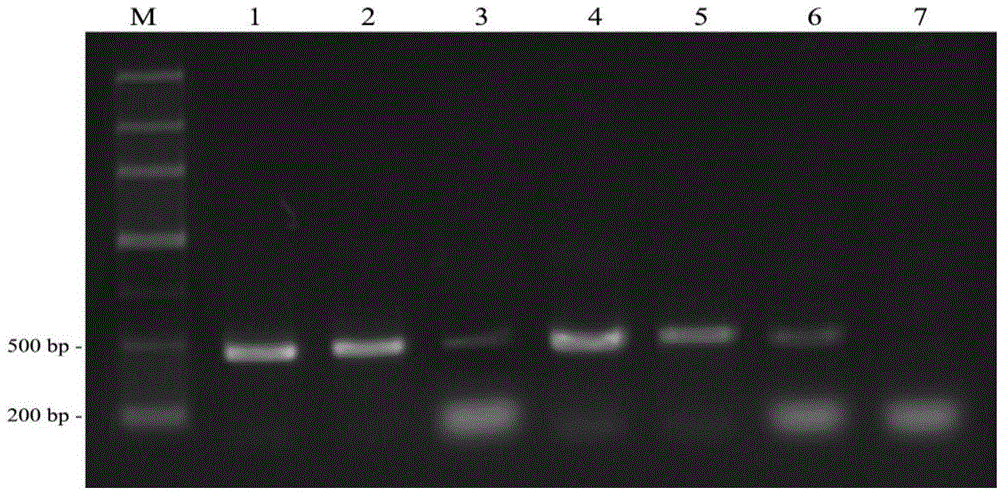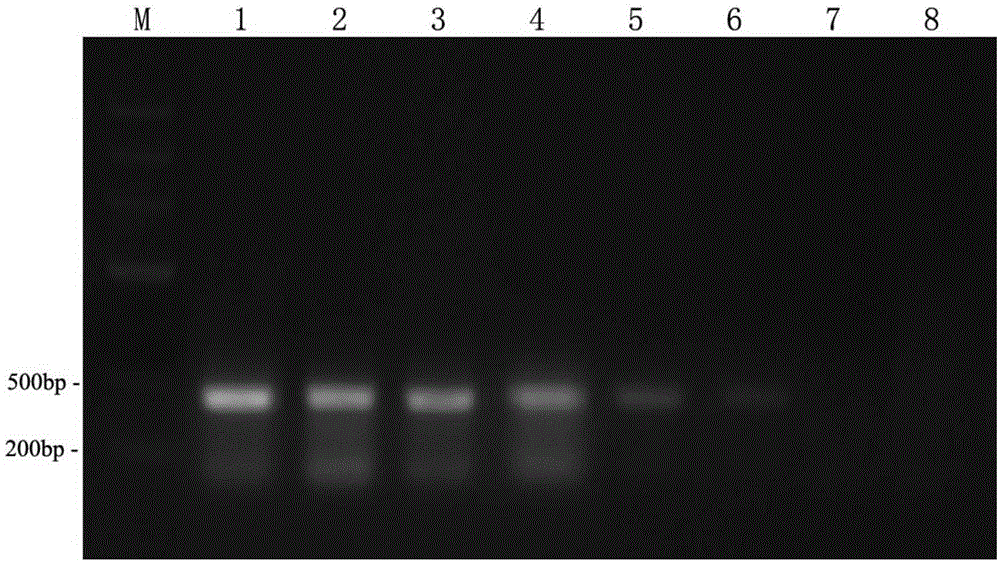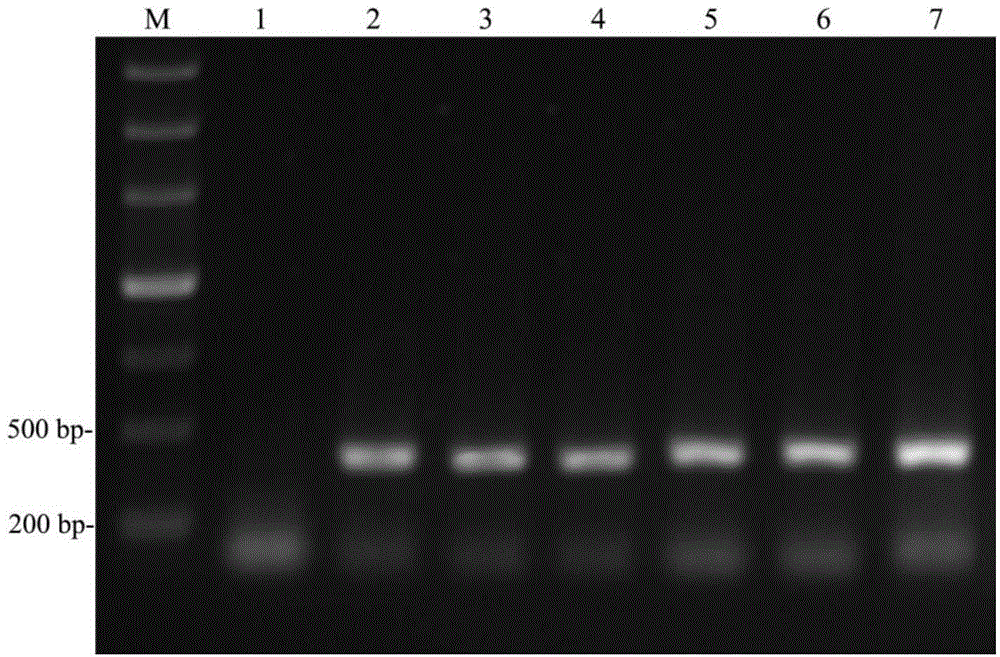Method for detecting pine xylophilus, detection primers and lamp detection kit thereof
A pine wood nematode and kit technology, which is applied in biochemical equipment and methods, recombinant DNA technology, and microbial determination/inspection, etc., can solve the problems of cumbersome process, multiple samples, low sensitivity, etc., and achieve wide application prospects and operation. Simple, highly sensitive results
- Summary
- Abstract
- Description
- Claims
- Application Information
AI Technical Summary
Problems solved by technology
Method used
Image
Examples
experiment example 1
[0054] Experimental example 1 Optimization experiment of the extraction method of genomic DNA of pine xylophilus
[0055] 1. Using Chelex-100 as the extraction buffer to extract nematode DNA from pine wood
[0056] 1. Experimental method
[0057] Select 6 samples of pine wood containing pine wood nematodes, weigh about 100mg of wood blocks (containing about 25 nematodes), put them into a 5ml centrifuge tube, add 5% (w / v) Chelex-100 1ml, and stir with the tip of the pipette. Mix well, place on ice for 5 minutes, invert and mix well, boil in water for 5 minutes, draw the supernatant and use ITS region-specific primers for PCR amplification, take pictures by electrophoresis, and test the stability of the extraction method; take healthy wood samples and 20 pine wood nematodes artificially Mix, use the same method to extract nematode DNA, DNA extraction solution 2 n Double serial dilution, PCR amplification, electrophoresis, photographing, and quality analysis of the DNA extract....
experiment example 2
[0070] Experimental Example 2 Screening experiment of primers for detection of pine xylophilus LAMP
[0071] 1. Main experimental materials and methods
[0072] 1. Biomaterials
[0073] All nematodes used in this experiment are listed in Table 1. Wood samples were selected from pine trees that died in the same year, and discs with a thickness of about 5 cm were cut from the base, middle, and crown base of the felled trunk, put into sampling bags, and brought back to the laboratory. Select 10g of rings within the bark and 3-5cm outside the heartwood, split them into wood chips with a thickness of 1-2mm with an axe, and use 6g for the separation of the Bellman funnel. After 24 hours, count with a nematode counting dish, and repeat 3 times for each sample ,take the average. The remaining 4g was used for LAMP diagnosis.
[0074] 2. Extraction of nematode DNA from wood chips for LAMP reaction
[0075] Weigh about 100mg of wood block (containing about 25 nematodes), put it into...
experiment example 3
[0174] Experimental example 3 Detection of pine xylophilus using No. 4 LAMP primer set
[0175] 1. Experimental materials and general methods
[0176] 1. The specific primers for the LAMP reaction are as follows:
[0177] 4F3: 5'---TGTAAACACCGTATAAAGGAATT---3'; (SEQ ID NO. 13)
[0178] 4B3: 5'---AAGCGGTCTAAGCGAAAC---3'; (SEQ ID NO.14)
[0179] 4FIP:
[0180] 5'---CATCCTTTGGTCGCTTTCTGAGTTTTAAAAATTTCACCACGTTCG---3'; (SEQ ID NO.15)
[0181] 4BIP: 5'---CCGATTGTCTAACTTCTGCTGCGCTTGTTCTCTGAGACCATA---3'; (SEQ ID NO. 16)
[0182] Loop primer 4LBA: 5'---TTCCGAAAAGCTTGGGTAAAATCCT---3'. (SEQ ID NO. 33)
[0183] 2. See Table 1 in Experimental Example 2 for pine xylophilus and pseudo-pine xylophilus.
[0184] 3. Extraction of nematode DNA from wood chips for LAMP reaction
[0185] Weigh 0.05g of wood blocks containing nematodes, put them into a 2ml centrifuge tube, add guanidine isothiocyanate extraction buffer (3M guanidine isothiocyanate, 50mM Tris-Cl pH8.0, 20mM EDTA pH8.0, 1% T...
PUM
 Login to View More
Login to View More Abstract
Description
Claims
Application Information
 Login to View More
Login to View More - R&D
- Intellectual Property
- Life Sciences
- Materials
- Tech Scout
- Unparalleled Data Quality
- Higher Quality Content
- 60% Fewer Hallucinations
Browse by: Latest US Patents, China's latest patents, Technical Efficacy Thesaurus, Application Domain, Technology Topic, Popular Technical Reports.
© 2025 PatSnap. All rights reserved.Legal|Privacy policy|Modern Slavery Act Transparency Statement|Sitemap|About US| Contact US: help@patsnap.com



